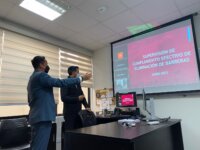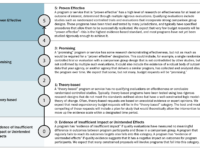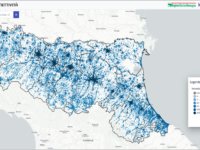The Government of Ekiti State is working with the Massachusetts Institute of Technology Governance Lab (MIT/GOVLAB) and has developed a community-based reporting system called “E-Surv”. E-Surv enables the participation of community members in public health surveillance by reporting public health events/emergencies, to activate a time-efficient government-led responses. This E-Surv which has been piloted in the State will create an early warning system for disease surveillance and laboratory…
Innovation Tag: Design
Survey figures spoke an alarming truth about a lack of awareness in the public of the risks of the flu and Covid-19, especially when they were circulating at the same time, alongside the essential protection that the vaccines provide. This meant that there was a need for a tool that provided instant access to a trusted voice (the NHS) to cut through misinformation and confusion caused online and to encourage vaccination. The 'NHS Winter Vaccines Virtual Helper' was developed to become that tool.
Louth County Council has piloted a new training resource, the Healthy Ireland Design Innovation (HIDI), which assists cross-departmental staff to apply the principles and goals of ‘universal design’ to their local economic and community planning activities. Taking a ‘universal design’ approach provides an ‘awareness framework’ to align innovation across the varying strands of local service and activity planning. As a result, staff can better plan for the integrated health, wellbeing,…
The UK government launched a new “youth hub” offer of employment services to young people affected by the disruption of the covid-19 pandemic. Through four days of workshops with key stakeholders, which included engaging young people, Impetus ran a theory of change process to enable one of the flagship hubs to co-design their new service to best serve young people. This is the first time that Impetus has applied its theory of change tools, and its impact focus to a government policy…
Latvia has developed an Innovation lab for user centric policy making via diverse innovative methodologies. We integrated innovative approaches to policy making at the very center of public administration, aiming to tackle complex horizontal issues via cross sectoral co-creation in development and testing of solution prototypes. InLab has become a national live testbed for new policy planning approaches with a vision of extending its impact to regional level.
Governments must judge hundreds of new programmatic budget proposals each fiscal year with little objective information about whether they will achieve the results claimed. Evidence of program effectiveness is a critical data point that is used when making budget and policy decisions, as programs with greater evidentiary support are generally more likely to deliver a high return on investment of public funds. The The Policy Lab at Brown University leveraged existing public clearinghouses of peer…
The UK Government Policy Profession has piloted a new model called Shared Policy Capability Project to support department leaders and policy makers undertake a facilitated self-assessment of their policy environment and identify opportunities for improvement. Through this the government aims to build capability at a department level and enable policymakers to take an active role in improving the environment in which they make policy.
Emilia-Romagna’s Digital Agenda led a significant innovation process for public administration decision-making. The process resulted in a co-design phase with local administrations to structure and publish online the first geo-referenced regional Observatory on ultra-broadband connectivity in Italy. Multi-stakeholder participation made it possible to identify and highlight the various strengths and weaknesses of the tool, enabling its optimisation.
In response to the absence of a reliable digital tool that empowers mothers and parents with evidence-based methods of healthcare, the BarevBalik (Hello, Child!) platform (website and mobile app) was developed in cooperation with the Republic of Armenia's Ministry of Health. It is a "one-stop-shop" for maternal and child healthcare that provides access to health information, information on public health services, digital tools, and a digitalized health service.
Case Study
Promoting Compliance through Effective Communication: An Application of the Framing Effect in the…

INDECOPI, the agency of competition in Peru, has created a specialized unit called “Effective Compliance Team”, which incorporates behavioral insights (framing effect) in their communication with other government institutions. Through this innovation, the government has a cost-effective tool to incentivize compliance, ensure the understanding of other institutions about bureaucratic barriers to competition, and benefit economic agents in the market and overall, the citizens of Peru.






